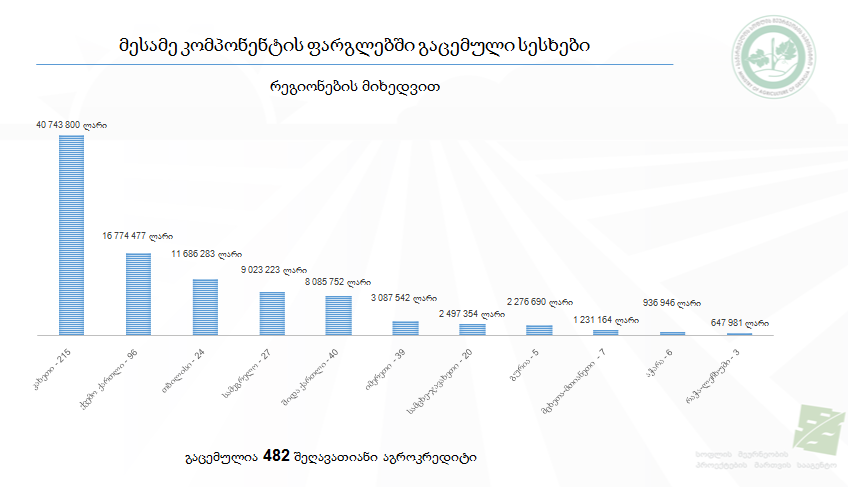On 11 April 2014 the 16th International Tourism Exhibition was opened at the Expo Georgia exhibition centre. Delivering a speech at the exhibition, the Minister of Economy and Sustainable Development, Giorgi Kvirikashvili, stated: “In 2013, the number of visitors grew by 22%. A total of 5.4 million visitors came to Georgia and with this indicator we hold one of the leading positions in Europe.”
FactCheck took interest in the statement and verified its accuracy.
According to the information provided by the Georgian National Tourism Administration, a total of 5,365,356 visitors came to Georgia in 2013 whereas in 2012 their number totalled 4,428,221. Accordingly, in 2013 the number of visitors increased by 937,135; that is, by 21.2%. Citizens of neighbouring countries (Turkey, Azerbaijan, Armenia and Russia) accounted for 88% of the total number of foreign visitors to Georgia with the remaining 12% comprising visitors from other countries. It is worth noting that the largest share of foreign visitors to Georgia came from Turkey and accounted for 28% of the total number of visitors. In 2013, the number of visitors from the Russian Federation showed an upturn of 49% as compared to the indicator of 2012 and amounts to 14% of the overall number of visitors to Georgia.
In order to establish Georgia’s ranking in Europe based upon the number of visitors, we studied the 2013 report of the United Nations World Tourism Organisation (World Tourism Barometer, January 2014). In line with this document, Georgia is the foremost country in Europe with its growth of 21.2% in the number of visitors.
The following graph depicts the list of countries in Europe and Central Asia that had the highest growth rates in the number of visitors in 2013.
The graph shown above reveals that Georgia occupies the second position in the region being surpassed by 0.7% solely by Kazakhstan.
FactCheck also inquired about the growth tendency observed in the number of visitors entering Georgia in the past years. As can be gathered from Graph 1, the number of visitors grew each year starting from 2006. It is of special note that during the economic crisis of 2008, when touristic activities declined all over the world, the number of visitors to Georgia increased by 23%. In line with the 2013 report of the Georgian National Tourism Administration, in the course of the last five years Georgia had the highest growth rates of the number of visitors in Europe. It should also be mentioned that despite the high percentage of growth, the number of visitors to Georgia is still far lower than in many other countries of the world. Therefore, along with the percentage of growth, it is advisable to take into account the number of visitors and the absolute indicator of growth. For an illustration we can consider the indicators of France in comparison to those of Georgia. In 2012, the number of visitors to Georgia grew by 1,605,858 as compared to the previous year amounting to a 57% growth. France hosted a total of 83 million visitors in 2012 whereas in the preceding year the same indicator equalled 81.6 million. Although France had 1,400,000 more visitors in 2012 than in 2011, the percentage growth amounted to only 1.8%. As becomes evident from this illustration, the absolute growth of the number of visitors may be roughly equal in two countries but the difference in percentages can be quite substantial. Therefore, the rise in the number of visitors to a country tells us much more than the percentage of growth.
Conclusion
In line with the information of the Georgian National Tourism Administration, a total of 5,365,356 visitors entered Georgia in 2013 marking a growth of 21.2%. These indicators precisely correspond to the figures indicated by Giorgi Kvirikashvili.
In accordance with the 2013 report of the United Nations World Tourism Organisation, with the growth indicator of 21.2% Georgia holds the highest position in Europe while in the region of Europe and Central Asia Georgia is surpassed only by Kazakhstan by 0.7%.
FactCheck concludes that Giorgi Kvirikashvili’s statement: “In 2013, the number of visitors grew by 22%. A total of 5.4 million visitors came to Georgia and with this indicator we hold one of the leading positions in Europe,” is TRUE.

“In 2013, the number of visitors grew by 22%. A total of 5.4 million visitors came to Georgia and with this indicator we hold one of the leading positions in Europe.”
16/05/2014
True
The statement is accurate and nothing is missing
Persons
-

IFCN statement on U.S. visa restrictions...
FactCheck NewspaperFactCheck Newspaper -

“The GDP per capita was USD 4,300 in 202...
Half TrueThe statement is partly accurate, but the details are missing or some of the issues are without context -

“The budget for stray animals has been c...
TrueThe statement is accurate and nothing is missing






